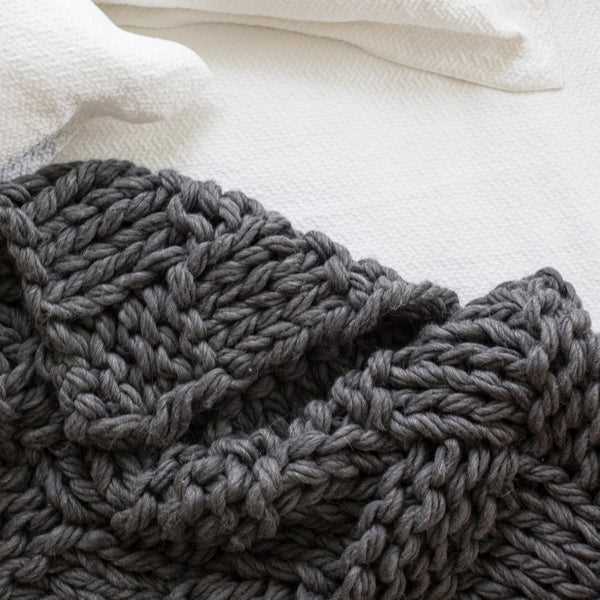
If you’re looking for a cozy and stylish addition to your home, a chunky wool knit blanket is the perfect choice. Made with thick yarn and large knitting needles, this blanket is not only warm and comfortable, but also a beautiful and trendy home decor piece.
The chunky wool knit blanket pattern is a simple yet rewarding project for both beginners and experienced knitters. With just a few basic knitting stitches and some patience, you can create a luxurious blanket that will be the envy of all your friends.
One of the great things about knitting a chunky wool blanket is that it works up quickly. The thick yarn and large needles allow you to see progress with each stitch, making it a gratifying project to work on. Plus, the chunky texture of the blanket adds an extra touch of coziness and warmth.
Whether you’re knitting for yourself or as a gift for a loved one, a chunky wool knit blanket is sure to be a hit. Its soft and plush texture, combined with its stylish and modern look, make it the perfect accessory for any home. So grab your knitting needles and start creating your own chunky wool knit blanket today!
Chunky Wool Knit Blanket Pattern
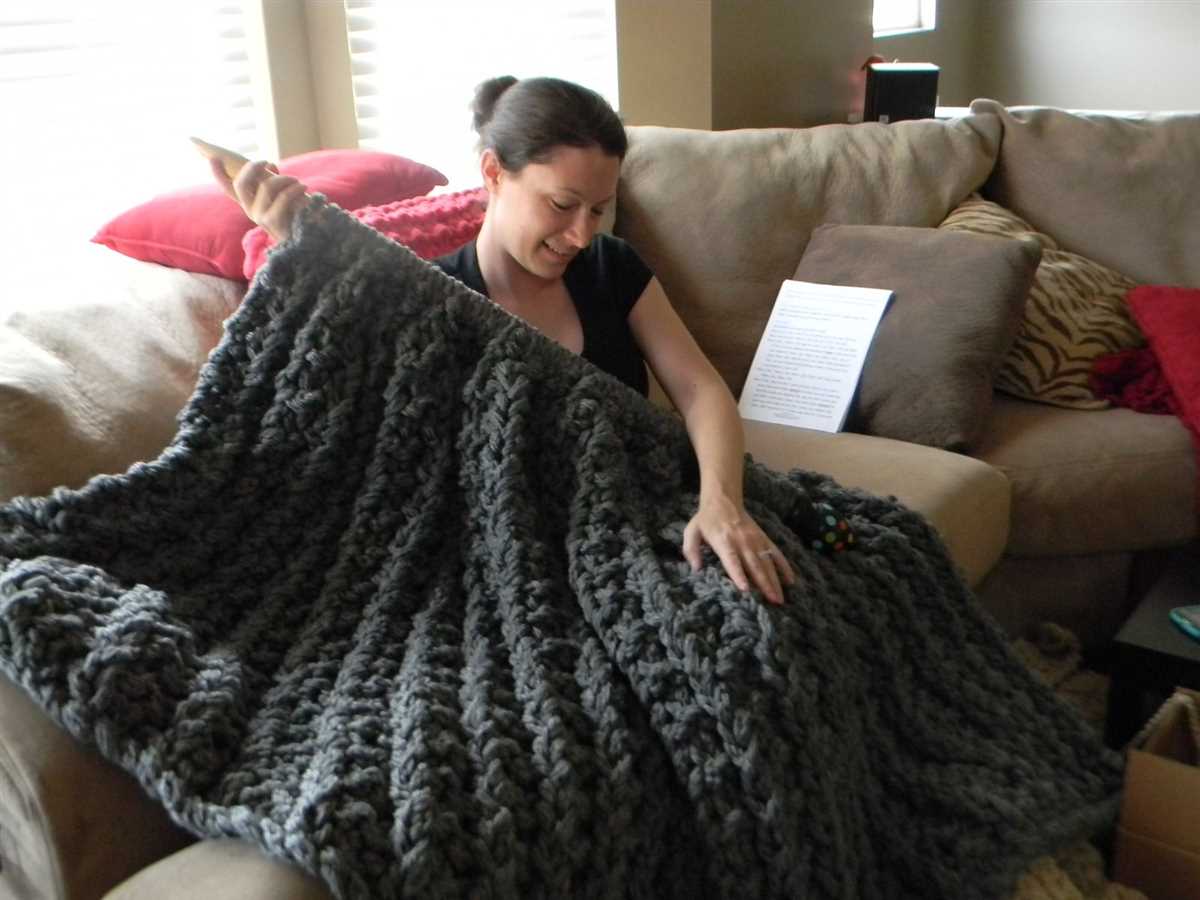
Are you looking for a cozy and stylish addition to your home decor? Look no further than a chunky wool knit blanket! These blankets are not only warm and comfortable, but they also add a touch of texture and visual interest to any space. And the best part is, you can easily make your own chunky wool knit blanket with just a few simple steps.
To start, you’ll need some chunky wool yarn and knitting needles. Opt for a wool blend yarn, as it will provide both warmth and durability. Choose a pair of knitting needles that are large enough to accommodate the chunky yarn, such as size 15 or 17. Once you have your materials ready, it’s time to get started on the pattern.
The pattern itself is fairly straightforward. Start by casting on an even number of stitches, depending on how wide you want your blanket to be. For example, if you want a 40-inch wide blanket, you might cast on 60 stitches. Then, simply knit in garter stitch, which means knitting every row, until your blanket reaches your desired length. To add some extra visual interest, you can also experiment with different stitch patterns, such as seed stitch or ribbing.
As you work on your blanket, be sure to check your gauge periodically to ensure that your stitches are the right size. A chunky wool knit blanket should have a loose, textured look, so you don’t want your stitches to be too tight. And don’t worry if your blanket isn’t perfectly even – the beauty of a chunky knit is in its imperfections.
Once you’ve finished knitting your blanket, it’s time to bind off your stitches. You can do this by knitting two stitches together, then passing the first stitch over the second. Continue this process until you have one stitch remaining, then cut your yarn and pull it through the final stitch to secure it. You can then weave in any loose ends and give your blanket a good block to help it retain its shape.
With just a little time and effort, you can create a beautiful chunky wool knit blanket that will not only keep you warm but also add a cozy and stylish touch to your home. So grab your knitting needles and get started on this fun and rewarding project today!
Why Choose a Chunky Wool Knit Blanket?
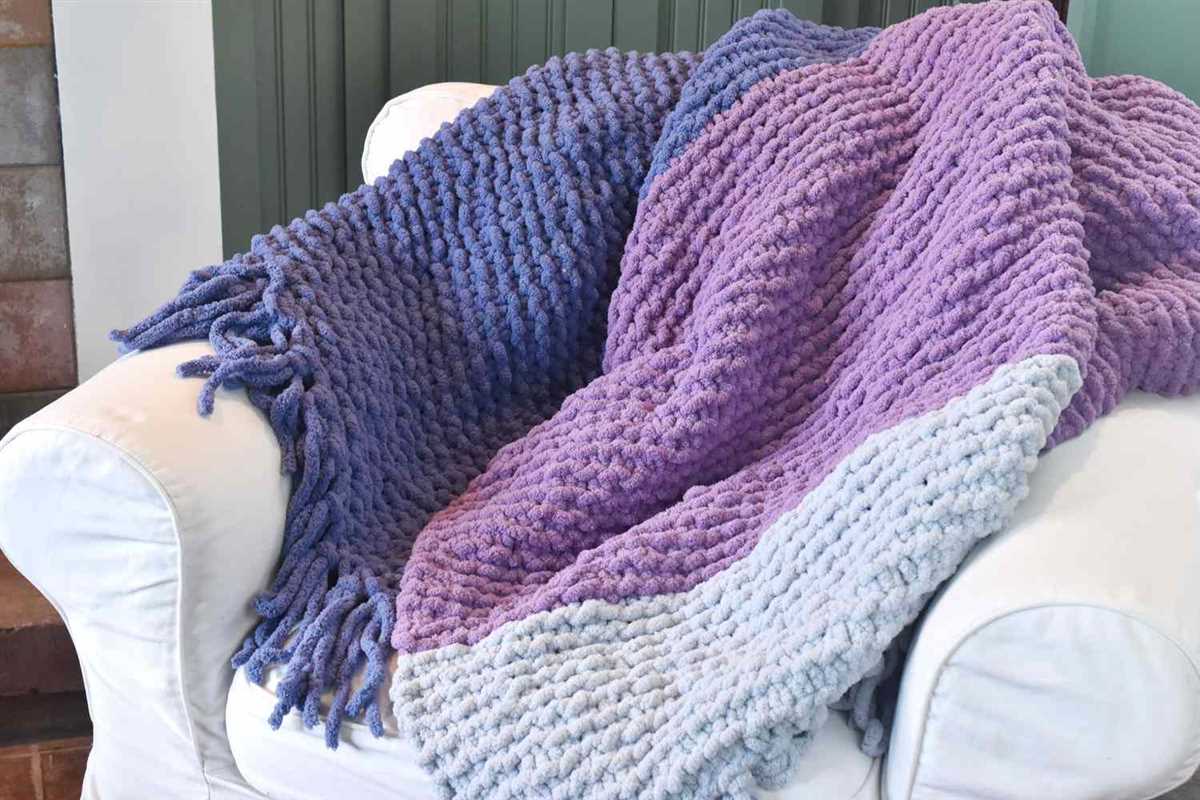
A chunky wool knit blanket is an excellent choice for several reasons. First and foremost, the chunky wool knit provides a luxurious and cozy texture that is incredibly soft and warm. This makes it perfect for snuggling up on the couch or adding an extra layer of warmth to your bed during the colder months.
Another reason to choose a chunky wool knit blanket is its durability. Wool is a natural fiber that is known for its long-lasting qualities. Unlike synthetic materials, wool is resistant to pilling and is less likely to wear out or lose its shape over time. This means that your chunky wool knit blanket will not only look beautiful, but it will also continue to perform well for years to come.
Additionally, a chunky wool knit blanket can add a touch of style and sophistication to any room. The chunky texture and unique pattern of the blanket can make it a focal point in your living room or bedroom, adding visual interest and a cozy atmosphere. Whether you prefer a classic cable knit design or a more modern geometric pattern, there are plenty of options to choose from that can complement your existing decor.
In conclusion, a chunky wool knit blanket is an ideal choice if you are looking for warmth, durability, and style. With its luxurious texture, long-lasting qualities, and ability to enhance your home’s aesthetic, it’s no wonder that chunky wool knit blankets are becoming increasingly popular among homeowners. So why not treat yourself to a chunky wool knit blanket and experience the comfort and beauty it can bring to your living space?
Getting Started: Materials and Tools

Before you start knitting your chunky wool blanket, you will need to gather all the necessary materials and tools. Here is a list of what you will need:
- Chunky wool yarn: This is the key material for your blanket. Choose a soft and thick yarn that will create a cozy and warm blanket. You can find chunky wool yarn in various colors and textures, so pick the one that matches your style and preferences.
- Knitting needles: Since you will be working with chunky yarn, you will need knitting needles that are suitable for the size of the yarn. Look for needles that are at least 10mm (US 15) in size.
- Tape measure: This tool will help you measure the dimensions of your blanket as you progress. Make sure to have a flexible tape measure that can easily wrap around your project.
Once you have gathered all the materials, you can start by casting on the first stitches using the knitting needles. The number of stitches will depend on the size of the blanket you want to make. You can refer to the pattern for specific instructions on casting on and the number of stitches required.
As you work on your blanket, it’s important to keep track of your progress and ensure that your stitches are even. You can use stitch markers or a row counter to help you keep count of your rows. Additionally, having a pair of scissors and a yarn needle handy will be useful for finishing touches and weaving in loose ends.
With the right materials and tools at hand, you are now ready to embark on your chunky wool knit blanket journey. Remember to take your time and enjoy the process of creating a warm and cozy blanket that will bring comfort to your home.
Choosing the Right Yarn
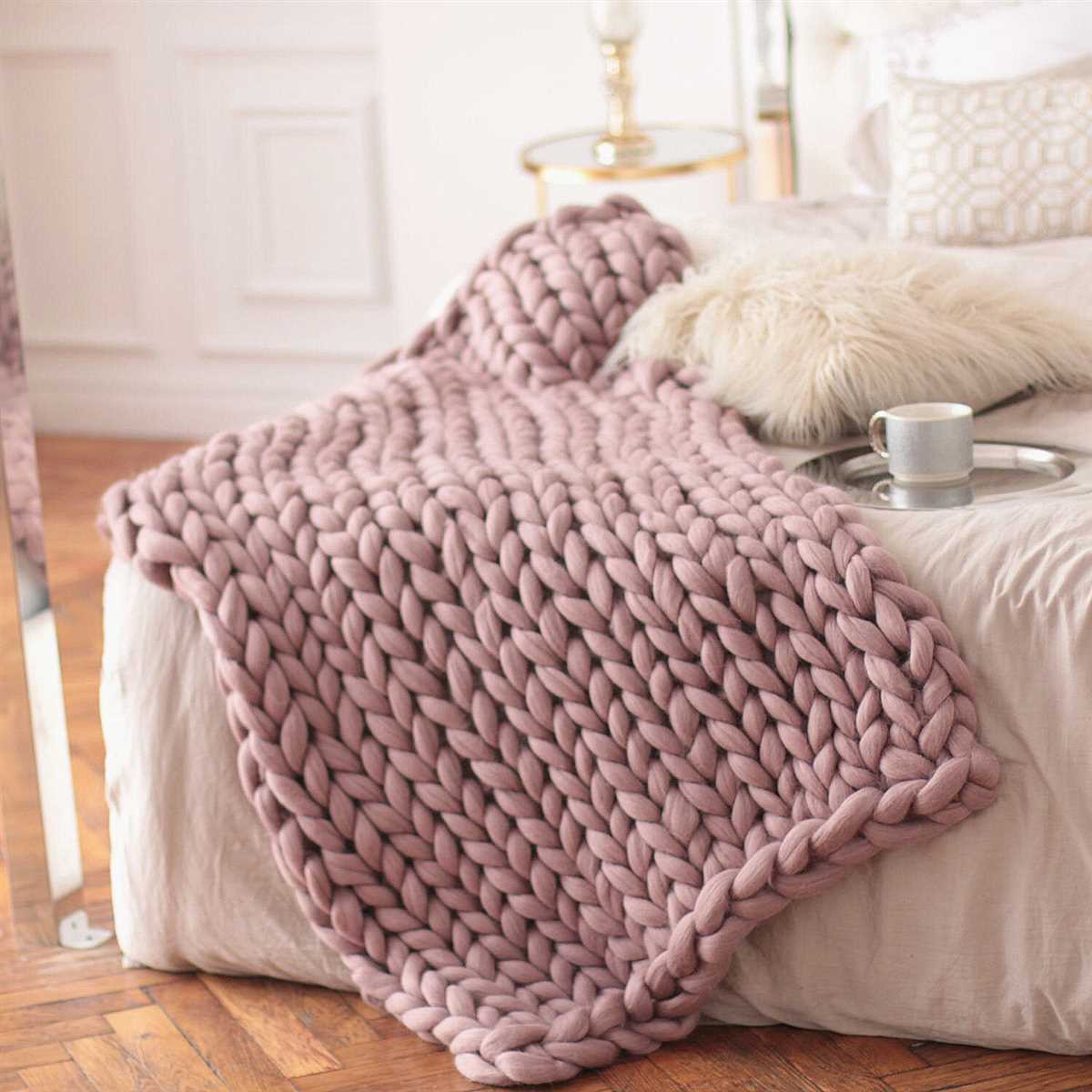
When it comes to creating a chunky wool knit blanket, choosing the right yarn is crucial. The type of yarn you use will determine the overall look, feel, and durability of your blanket. Here are a few key factors to consider when selecting your yarn:
1. Yarn Weight

The weight of the yarn refers to its thickness and is usually described using a numbered system, with higher numbers indicating thicker yarn. For a chunky knit blanket, you’ll want to choose a bulky or super bulky weight yarn. These yarns will create the cozy, oversized look that is characteristic of chunky knit blankets.
2. Fiber Content
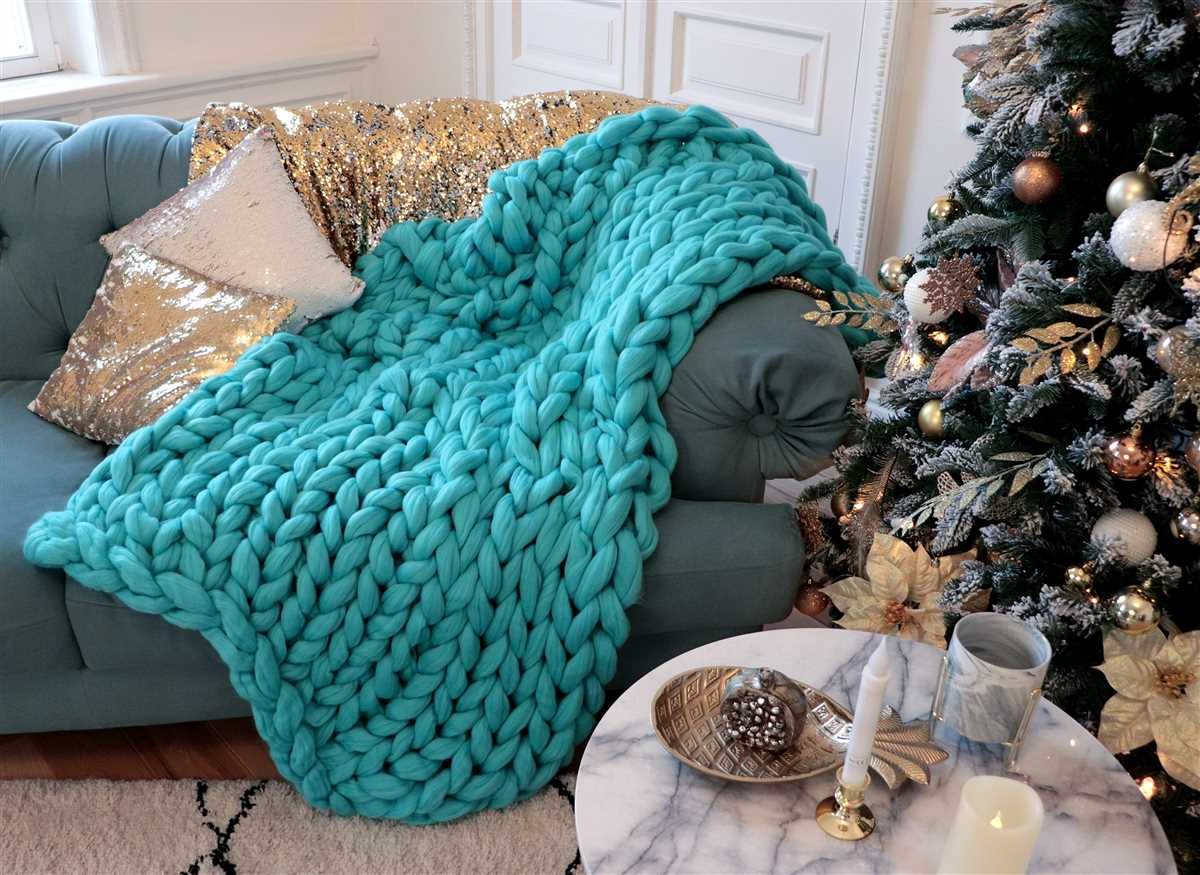
The fiber content of the yarn will affect both the appearance and feel of your blanket. Natural fibers, such as merino wool or alpaca, are popular choices for chunky blankets as they offer warmth, softness, and breathability. However, synthetic fibers like acrylic can also be used and may be more affordable and easier to care for.
3. Color and Texture
Consider the color and texture of the yarn when choosing yarn for your chunky knit blanket. Neutral tones like cream, gray, or beige are classic choices that will complement any decor. If you want to add some visual interest, you can opt for a yarn with a heathered or marled effect. Additionally, consider the texture of the yarn – a smooth yarn will create a sleek, modern look, while a yarn with more texture will add depth and visual appeal to your blanket.
4. Yardage and Price
Finally, consider the yardage and price of the yarn. The amount of yarn you’ll need will depend on the size of your blanket, so make sure to check the yardage per skein and calculate accordingly. As for the price, remember that higher-quality yarns usually come with a higher price tag. However, investing in good quality yarn will result in a more durable and long-lasting blanket.
By considering these factors when choosing your yarn, you’ll be able to create a beautiful and cozy chunky wool knit blanket that you’ll love to cuddle up with.
Understanding Gauge and Tension
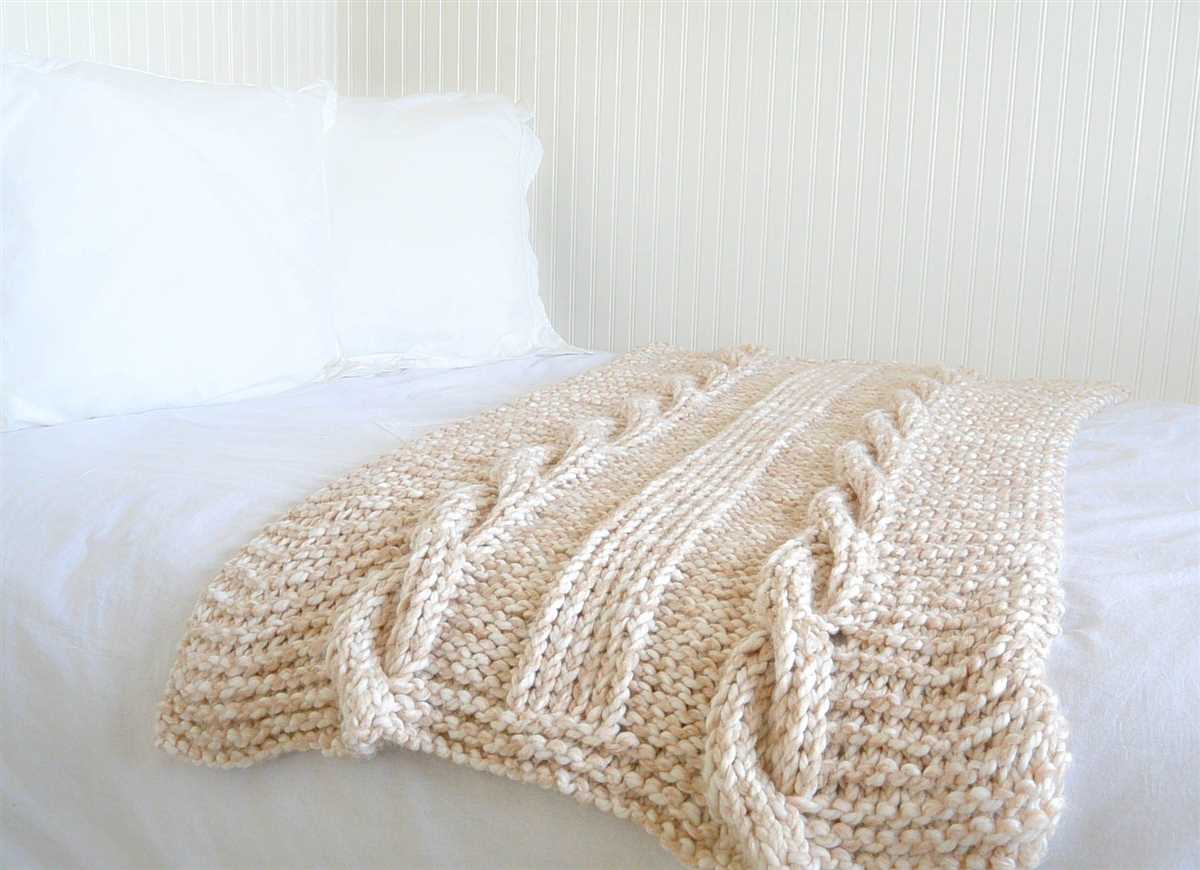
When it comes to knitting a chunky wool knit blanket, understanding gauge and tension is crucial for achieving the desired finished product. Gauge refers to the number of stitches and rows per inch, which determines the size and drape of the blanket. Tension, on the other hand, refers to how tightly or loosely a person knits, which can affect the gauge.
To get an accurate gauge measurement, it is important to use the recommended yarn and needle size suggested in the pattern. Using a different yarn weight or needle size can result in an inconsistent gauge and may lead to a blanket that is either too small or too large. It’s always a good idea to make a gauge swatch before starting the actual project to ensure the measurements are correct.
Measuring gauge:
To measure the gauge, take a 4×4 inch swatch of the chosen stitch pattern, and follow the instructions in the pattern for the specified number of rows and stitches. Once complete, lay the swatch flat and use a ruler or tape measure to count the number of stitches and rows within the 4×4 inch area. This will give you the gauge measurements.
Adjusting tension:
If the gauge is not matching the pattern instructions, it might be necessary to adjust the tension. If the gauge is too tight, try using larger needles. On the other hand, if the gauge is too loose, try using smaller needles. By making these adjustments, you can achieve the correct gauge and ensure that your chunky wool knit blanket turns out just right.
- Use the recommended yarn and needle size suggested in the pattern.
- Make a gauge swatch before starting the project.
- Measure the gauge accurately using a 4×4 inch swatch.
- Adjust the tension by using either larger or smaller needles.
Casting On and Creating the Foundation Row
If you’re ready to start knitting your chunky wool blanket, the first step is casting on and creating the foundation row. This is an important part of the process as it sets the stage for the rest of your project. There are different methods you can use to cast on, but for this pattern, we recommend using the long tail cast on method.
To begin, you’ll need your chunky wool yarn and a pair of knitting needles. Make a slip knot by creating a loop with the yarn, leaving a long tail. Insert your knitting needle through the loop and pull on the yarn tail to tighten the loop onto the needle. This slip knot will be your first stitch.
Next, hold the needle with the slip knot in your right hand, and use your left hand to hold the other needle. Position your hands so that the needles are parallel and the slip knot is at the end closest to you.
Using your right hand, insert the needle into the slip knot from front to back, bringing the needle underneath the left needle. With your left hand, bring the yarn over the top of the right needle, creating a loop around the needle. Use your right hand to pull the right needle back, pulling the loop through the slip knot.
Continue this process of inserting the right needle into the loop created by the previous stitch and bringing the yarn over the needle, creating a new loop. Repeat until you have cast on the desired number of stitches for your blanket. Be sure to keep your tension even as you go along to ensure consistent stitches.
Once you have cast on all your stitches, you’ll have your foundation row ready to start knitting. Now you’re ready to move on to the next step in creating your chunky wool knit blanket!
Knitting the Main Body of the Blanket
Once you have cast on the desired number of stitches, you can start knitting the main body of the blanket. Using chunky wool and large knitting needles, the process is relatively quick and straightforward.
Row 1- Knit all stitches: To begin, simply knit every stitch across the row. This creates the foundation for your blanket and establishes the stitch pattern for the rest of the project.
Repeat Row 1 until desired length: Continue knitting all stitches in each row until the blanket reaches your desired length. You can measure the length of the blanket by placing a tape measure or ruler along the edge of your work.
Check your gauge: While knitting, it’s important to periodically check your gauge to ensure that your tension is consistent. This will help you maintain an even and professional-looking blanket. If your tension is too tight, the blanket may become too narrow. On the other hand, if your tension is too loose, the blanket may become too wide.
Switch yarn colors: If desired, you can switch between different colors of chunky wool to create a striped or patterned effect. Simply cut the previous color of yarn, leaving a tail to weave in later, and join the new color by making a slip knot and placing it on your right-hand needle.
Finishing off: Once you have reached your desired length, you can finish off your blanket by binding off all stitches. To do this, knit the first two stitches, then use your left-hand needle to lift the first stitch over the second stitch and off the right-hand needle. Continue this process across the row until you have one stitch remaining, then cut the yarn, leaving a tail to weave in.
Congratulations! You have now completed the main body of your chunky wool knit blanket. It’s time to add any finishing touches and enjoy the cozy warmth it will provide.
Adding Texture with Different Stitches
When it comes to creating a chunky wool knit blanket, the choice of stitches can play a big role in adding texture to the finished product. Different stitches can create different patterns, adding depth and visual interest to the blanket.
One popular stitch for adding texture to a chunky wool knit blanket is the seed stitch. This simple stitch involves alternating knit and purl stitches in a regular pattern. The result is a bumpy, textured surface that gives the blanket a cozy and inviting look.
Another stitch that can be used to add texture is the cable stitch. This stitch is created by crossing stitches over each other, creating a braided or twisted effect. The cables can be simple or intricate, depending on the desired look. Knitting a few rows of cables throughout the blanket can create a stunning visual effect and add dimension to the overall design.
For a more subtle texture, the moss stitch can be used. This stitch involves alternating knit and purl stitches, but in a different pattern than the seed stitch. The result is a more uniform and delicate texture that adds a touch of elegance to the blanket.
One final stitch to consider is the rib stitch. This stitch creates columns of knit and purl stitches that can be either narrow or wide, depending on the desired effect. The rib stitch adds a classic and timeless texture to the blanket, making it a versatile choice for any style or decor.
By experimenting with these different stitches, you can create a chunky wool knit blanket that not only keeps you warm but also adds an element of visual interest to your home. Whether you choose the seed stitch, cable stitch, moss stitch, or rib stitch, each stitch adds its own unique texture and dimension to the final product.
Creating Borders and Edging

Adding a border or an edging to a chunky wool knit blanket can give it a polished and finished look. It can also help to reinforce the edges and prevent them from fraying or unraveling over time. There are several different techniques and patterns that can be used to create borders and edgings, depending on the desired effect and the skill level of the knitter.
1. Simple Ribbed Border

A simple ribbed border is a classic choice for adding a clean and structured edge to a chunky wool knit blanket. To create this border, simply knit a few rows of ribbing using a smaller needle size than what was used for the main body of the blanket. This will create a tighter and more defined edge. To finish off the border, bind off in pattern.
2. Seed Stitch Edging
For a more textured and decorative border, a seed stitch edging can be a great option. This stitch pattern alternates between knit and purl stitches, creating a bumpy and visually interesting texture. To add a seed stitch edging, knit a few rows of seed stitch using a smaller needle size. To finish off the edging, bind off in pattern.
3. Lace Knit Border

For a delicate and feminine touch, a lace knit border can be a beautiful addition to a chunky wool knit blanket. Lace patterns typically involve a series of yarn overs and decreases, creating an intricate and lacy design. There are many different lace patterns to choose from, ranging from simple and beginner-friendly to more complex and intricate. Knitting a few rows of lace pattern using a smaller needle size can create a stunning border with a delicate and airy feel.
4. Garter Stitch Edging
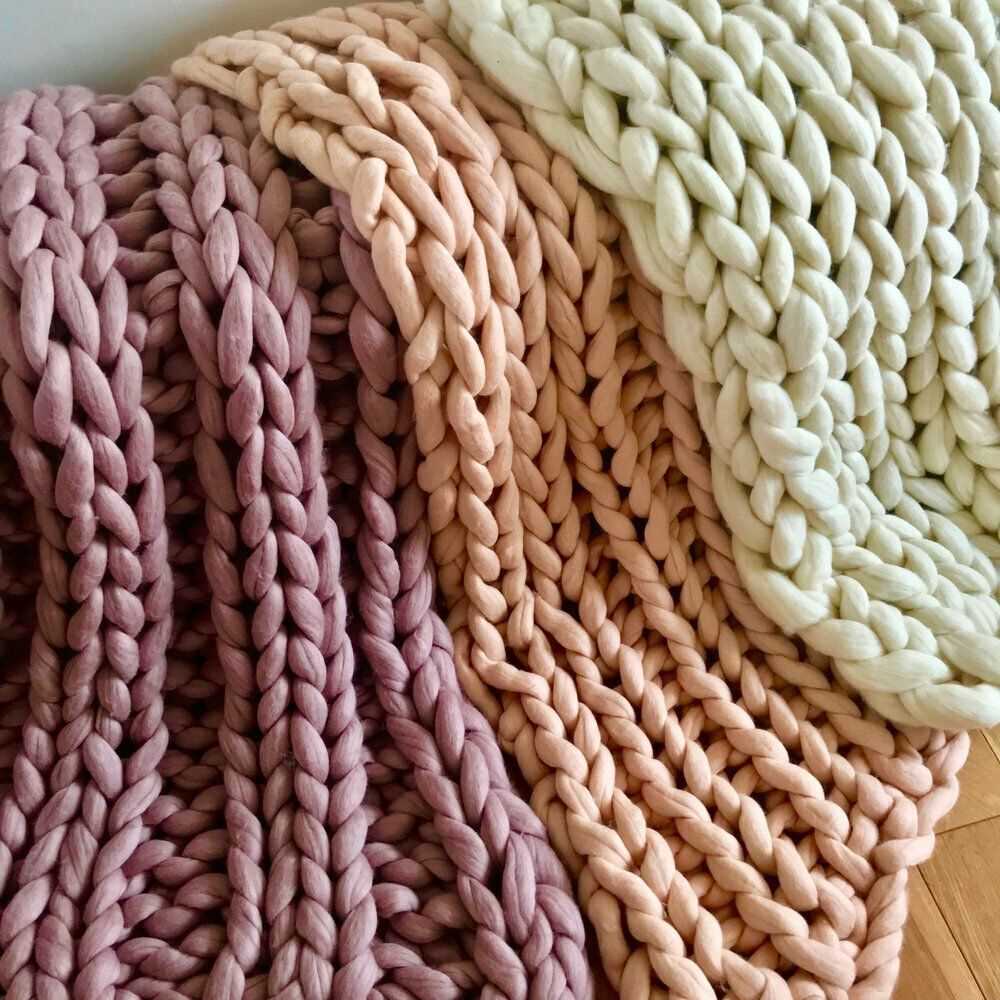
A garter stitch edging is a simple and versatile option for adding a finished edge to a chunky wool knit blanket. To create a garter stitch edging, knit every row for a few inches using a smaller needle size. This will create a bumpy and textured border that complements the chunky texture of the blanket. To finish off the edging, bind off in pattern.
Whether you prefer a clean and structured border or a more textured and decorative edging, there are many options available for adding the perfect finishing touch to your chunky wool knit blanket. Experiment with different patterns and techniques to find the one that best suits your personal style and the overall look you want to achieve.
Troubleshooting Common Knitting Mistakes
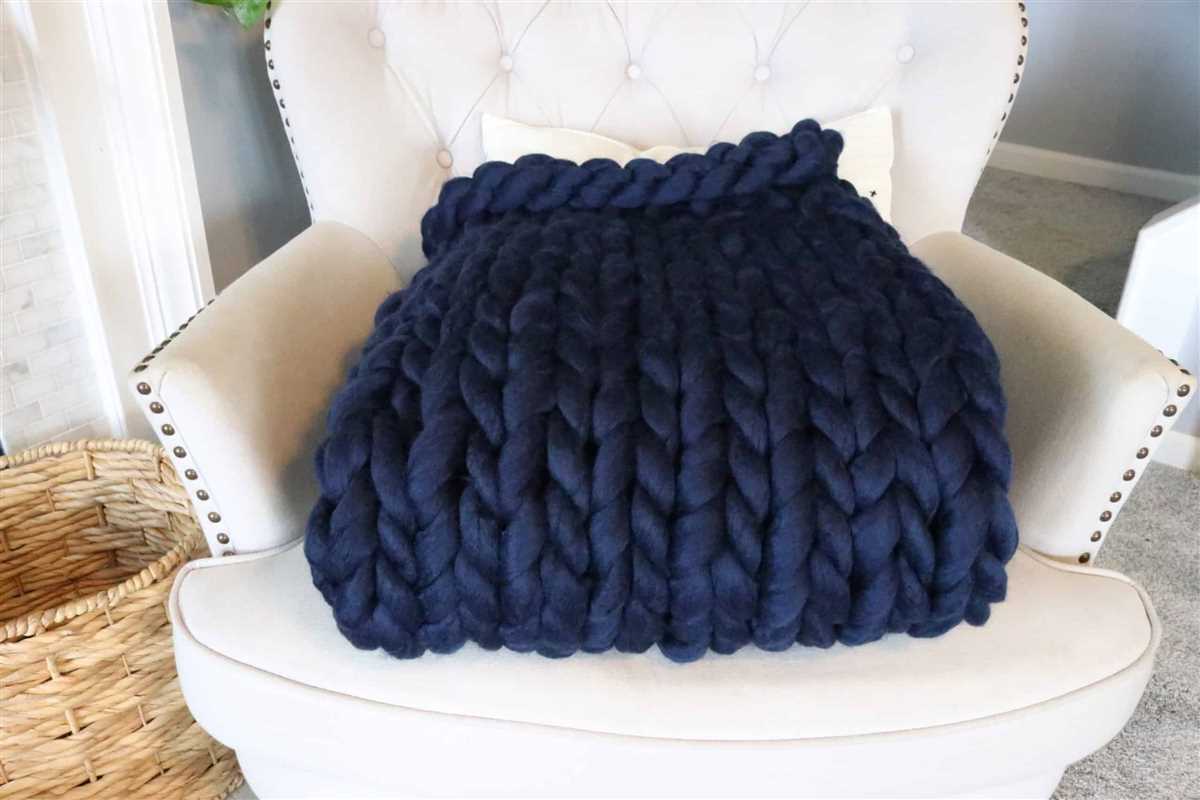
As with any craft, knitting can be a bit tricky at times. But fear not! With a little bit of knowledge and some troubleshooting, you can overcome common knitting mistakes and create beautiful pieces. Here are some tips to help you navigate through some of the most common knitting mishaps.
Dropped Stitches
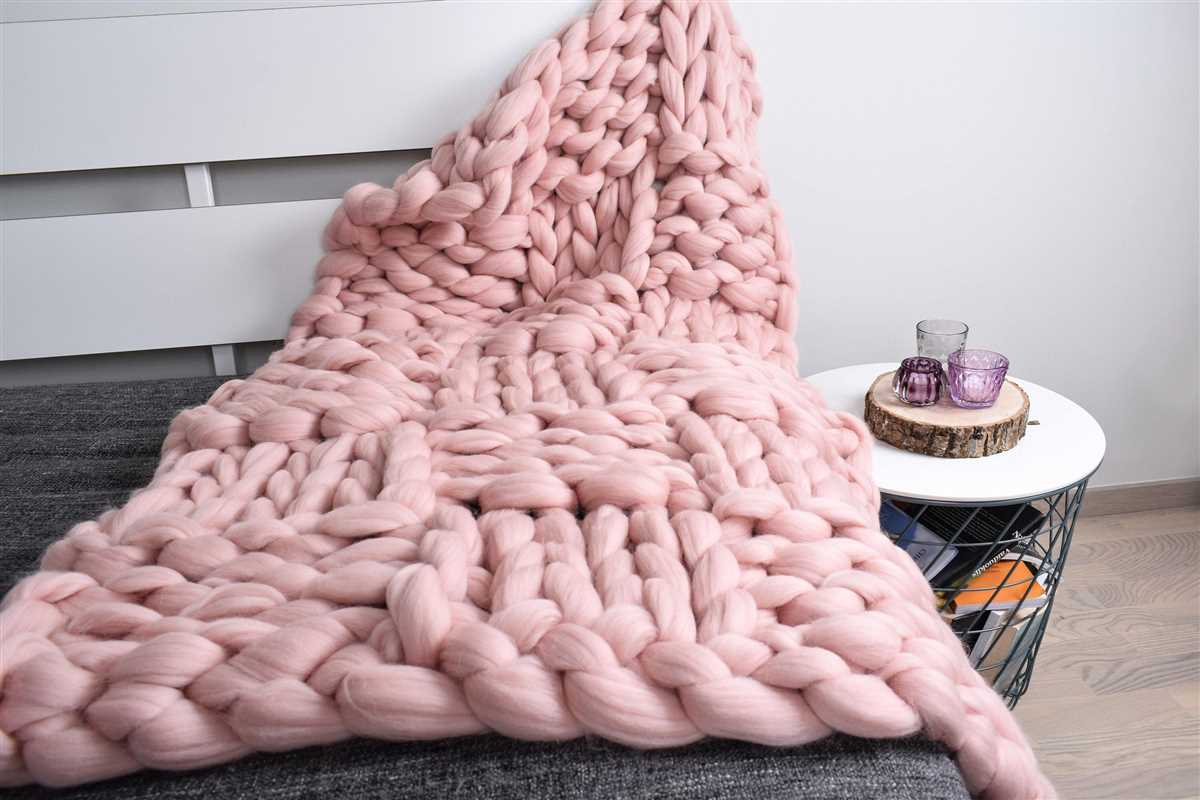
One of the most common knitting mistakes is dropping a stitch. This can happen when you accidentally let a stitch slip off the needle and it unravels down. To fix this, gently pull the stitch back up using a crochet hook or the knitting needle. Once the stitch is back in place, continue knitting as usual.
Uneven Tension
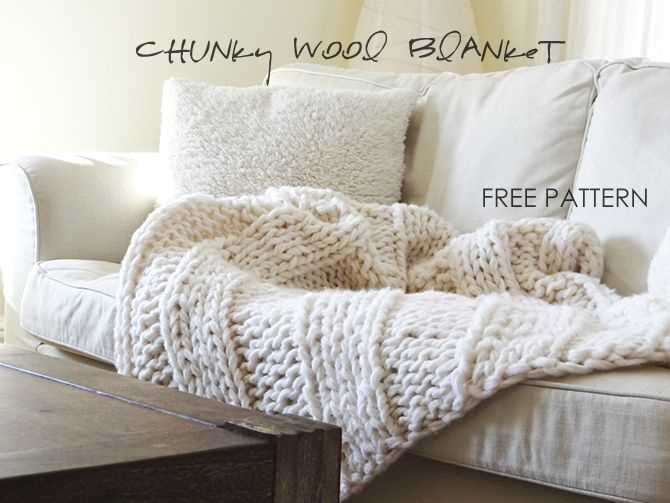
Another common issue is uneven tension, where some areas of your knitting are tighter or looser than others. To fix this, try adjusting your grip on the needles or using a different size needle. Practice can also help to improve your overall tension. If you notice uneven tension in a completed piece, you can block it to even out the stitches and improve the overall appearance.
Twisted Stitches
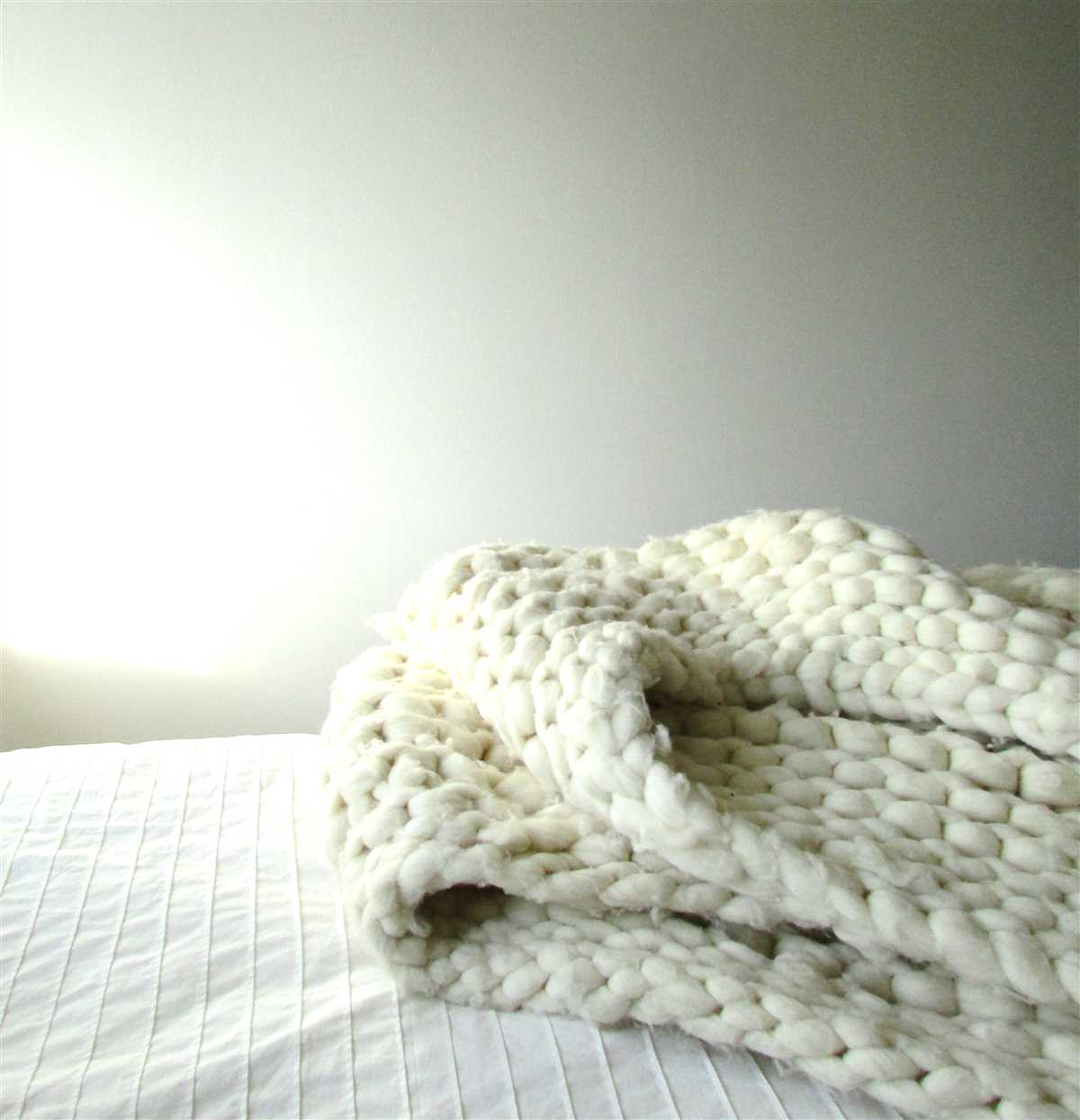
Twisted stitches can happen when you accidentally knit into the back loop instead of the front loop. This can create a twist in the stitch, causing your work to look different from the intended pattern. To fix this, you can carefully unravel the stitch and re-knit it correctly, or use a crochet hook to untwist the stitch by pulling it through the correct loop.
Gauge Problems

Gauge refers to the number of stitches and rows per inch in your knitting. If your gauge is too tight or too loose, your finished piece may not turn out as expected. To fix gauge problems, try using a different size needle to achieve the desired gauge. You may also need to adjust your knitting tension to match the pattern instructions.
Miscounting Stitches
It’s easy to lose track of your stitches, especially in more complex patterns. Miscounting stitches can throw off the entire pattern and make it challenging to continue knitting. To avoid this mistake, use stitch markers or keep a stitch count tally on a piece of paper. If you do miscount, try carefully unraveling back to the mistake and retrace your stitches.
Remember, knitting is a learning process, and making mistakes is a natural part of that process. With patience and practice, you’ll become more confident in your knitting skills and be able to troubleshoot any mistakes that come your way!
Finishing Touches: Blocking and Weaving in Ends
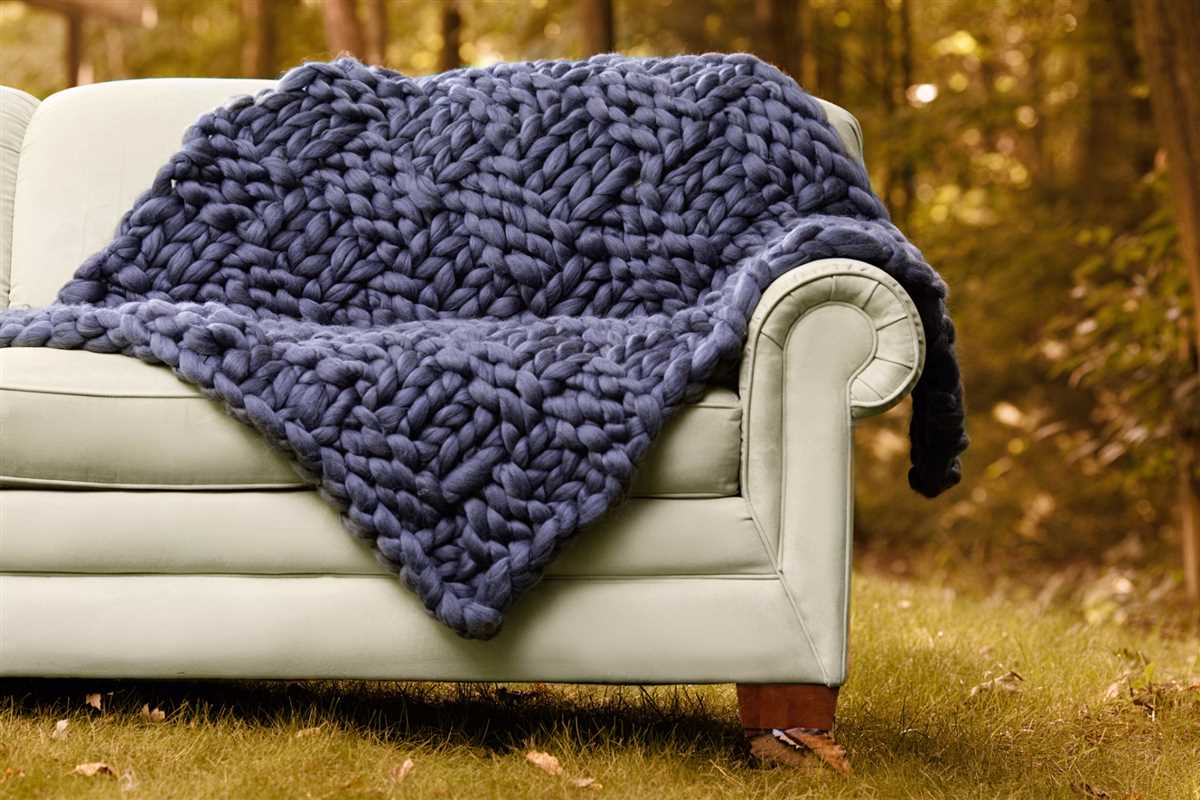
Once you have finished knitting your chunky wool blanket, it is important to give it the finishing touches to enhance its appearance and ensure that it looks its best. Two crucial steps in this process are blocking and weaving in ends.
Blocking: Blocking is the process of gently shaping and resizing the blanket to achieve a more even and professional-looking finish. To block your blanket, you will need to wash it according to the yarn manufacturer’s instructions. After washing, carefully remove excess water by gently squeezing or rolling the blanket in a towel. Next, lay the blanket flat on a clean surface, making sure to reshape it to your desired dimensions. Use pins or blocking wires to secure the edges and corners of the blanket into place. Allow the blanket to dry completely before removing the pins or wires. Blocking not only enhances the appearance of the blanket but also helps to set the stitches and relax the fibers, resulting in a more drapey and comfortable finished product.
Weaving in Ends: When you finish knitting your blanket, you will be left with several loose yarn ends from the cast-on and bind-off edges, as well as any color changes or yarn joins you made during the project. Weaving in these ends is crucial to prevent unraveling and to give your blanket a neater and more polished look. To weave in ends, thread the yarn end onto a tapestry needle and insert it under several adjacent stitches along the edge of the blanket. Repeat this process, going back and forth, until the end is secure and hidden within the fabric. Trim any excess yarn, ensuring that you leave a short tail to prevent the end from working its way out. By weaving in all the loose ends, your chunky wool blanket will not only look more professional but also have a longer lifespan.
Caring for Your Chunky Wool Knit Blanket
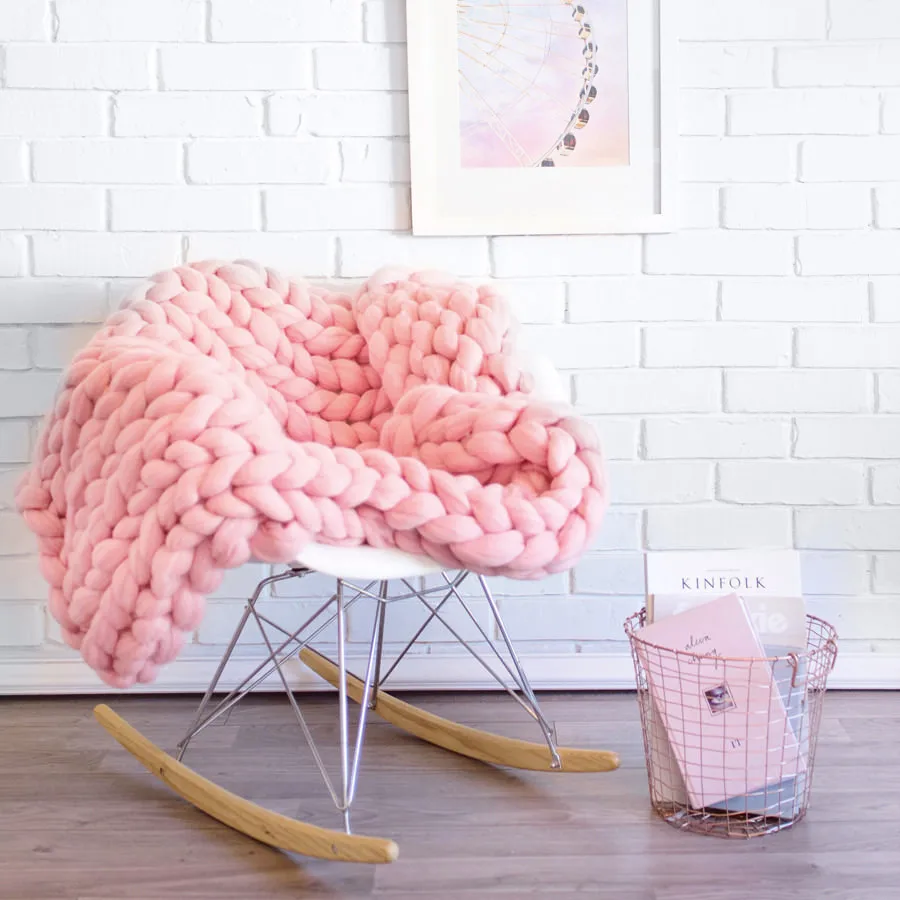
After spending time knitting or crocheting your beautiful chunky wool blanket, it’s important to care for it properly to ensure its longevity and maintain its gorgeous appearance. Here are some tips on how to care for your chunky wool knit blanket:
1. Hand wash your blanket: To prevent your chunky wool blanket from shrinking or becoming misshapen, it’s best to hand wash it. Fill a tub or basin with lukewarm water and a gentle wool detergent. Gently submerge your blanket in the water and let it soak for about 15 minutes. Gently agitate the water with your hands to remove any dirt or debris. Rinse the blanket thoroughly with clean water and gently press out any excess water. Avoid twisting or wringing the blanket as it can damage the delicate fibers.
2. Dry flat: After rinsing, carefully transfer your blanket onto a clean towel or a drying rack in its natural shape. Smooth out any wrinkles or creases. Avoid hanging your chunky wool blanket to dry as it can stretch and lose its shape. Leave it to air dry away from direct sunlight or heat sources.
3. Store properly: When not in use, store your chunky wool knit blanket in a cool, dry place to prevent any moisture or mold from affecting it. Avoid storing it in plastic bags, as wool needs to breathe. Instead, use a breathable fabric bag or fold the blanket neatly and place it in a drawer or on a shelf.
4. Protect from pets: If you have pets, be mindful of their claws as they can snag and pull the yarn of your chunky wool blanket. Keep your blanket away from areas where pets tend to play or rest to minimize the risk of damage.
5. Spot clean spills: In case of small spills or stains, gently blot the area with a clean, damp cloth. Avoid rubbing or scrubbing the stain, as it can push it further into the fibers. If the stain persists, consult a professional cleaner who specializes in wool products.
6. Rotate and flip: To ensure even wear and to prevent any areas from getting more worn out than others, it’s a good idea to rotate and flip your chunky wool blanket periodically. This will help maintain its overall appearance and durability.
By following these care tips, you can enjoy your chunky wool knit blanket for years to come. The cozy warmth and softness of your handmade creation will continue to bring comfort and joy to your home.
Q&A:
What is a chunky wool knit blanket?
A chunky wool knit blanket is a warm and cozy blanket made from thick, bulky yarn and knitted using large knitting needles or arms.
What is the pattern for a chunky wool knit blanket?
The pattern for a chunky wool knit blanket typically involves casting on a certain number of stitches, knitting in a simple stitch pattern such as garter stitch or ribbing, and continuing until the desired length is reached. It can be a simple rectangular shape or have more complex stitch patterns.
What kind of yarn is used for a chunky wool knit blanket?
A chunky wool knit blanket is usually made with super bulky or jumbo weight wool yarn. This type of yarn is thicker and heavier than regular yarn, creating a chunky and cozy blanket.
How long does it take to knit a chunky wool blanket?
The time it takes to knit a chunky wool blanket depends on the size, complexity of the pattern, and the knitter’s skill level. It can range from a few days to several weeks.
Can a beginner knitter make a chunky wool knit blanket?
Yes, a beginner knitter can make a chunky wool knit blanket. Simple stitch patterns like garter stitch or ribbing are great for beginners, and chunky yarn makes the knitting process quicker and easier.
What is a chunky wool knit blanket pattern?
A chunky wool knit blanket pattern is a set of instructions or guidelines for knitting a blanket using thick or chunky wool yarn. This pattern usually includes information about the required materials, recommended needle size, and specific stitches or techniques to create the desired texture or design.